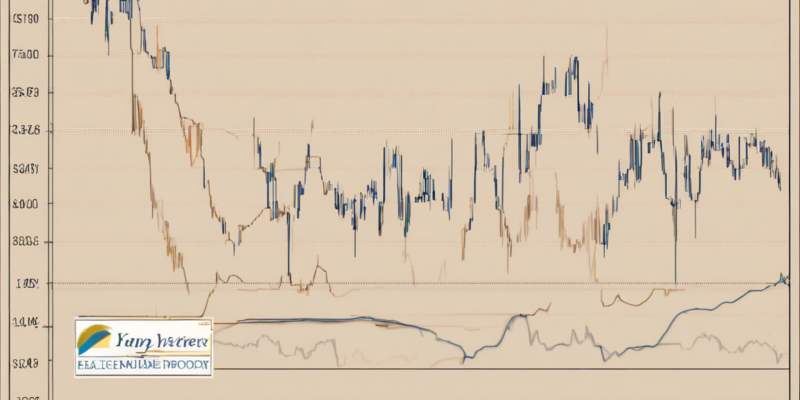Introduction
When it comes to property investment, understanding hemisphere properties and analyzing their share prices can be crucial for investors seeking to make informed decisions. Hemisphere properties refer to real estate assets located in different parts of the globe, including residential, commercial, industrial, and retail properties. In this article, we will delve into the world of hemisphere properties’ share price analysis, exploring key factors that influence these prices and how investors can evaluate them effectively.
Factors Influencing Hemisphere Properties’ Share Prices
Several factors can impact hemisphere properties’ share prices, and it is essential for investors to consider these aspects before making investment decisions:
-
Market Conditions: Just like any other asset class, hemisphere properties’ share prices are influenced by overall market conditions. Economic indicators, interest rates, and market sentiment can all play a significant role in determining share prices.
-
Property Valuation: The intrinsic value of the underlying properties in a company’s portfolio can directly impact its share price. Investors should analyze factors such as rental income, property appreciation, and potential for future growth to assess valuation.
-
Location: The geographic location of hemisphere properties can have a substantial impact on their share prices. Properties in prime locations with high demand are likely to command higher prices compared to those in less desirable areas.
-
Industry Trends: Understanding trends in the real estate industry is crucial for predicting future share price movements. Factors such as urbanization, technological advancements, and regulatory changes can all influence the value of hemisphere properties.
-
Financial Performance: Analyzing a company’s financial statements, including revenue, profit margins, and debt levels, can provide insights into its overall health and potential for share price growth.
Methods for Analyzing Hemisphere Properties’ Share Prices
Investors can utilize various methods to analyze hemisphere properties’ share prices effectively:
-
Comparable Company Analysis: By comparing a company’s financial metrics, such as price-to-earnings ratio and return on equity, to its peers in the industry, investors can assess its valuation relative to competitors.
-
Discounted Cash Flow Analysis: This method involves forecasting a company’s future cash flows and discounting them back to their present value. It can help investors determine the intrinsic value of a company’s shares.
-
Technical Analysis: Examining historical price patterns and trading volumes can provide insights into potential price trends and support levels for hemisphere properties’ shares.
-
Qualitative Factors: Beyond quantitative analysis, investors should also consider qualitative factors such as management quality, growth prospects, and competitive positioning when evaluating hemisphere properties’ share prices.
Investment Strategies for Hemisphere Properties’ Share Prices
For investors looking to capitalize on hemisphere properties’ share prices, the following investment strategies can be beneficial:
-
Diversification: Spread investments across different hemisphere properties to reduce risk and enhance potential returns. Diversification can help mitigate the impact of any single property underperforming.
-
Long-Term Perspective: Real estate is typically a long-term investment, and investors should adopt a patient approach when analyzing hemisphere properties’ share prices. Focus on fundamental value and growth potential over time.
-
Risk Management: Consider using tools such as stop-loss orders to limit potential losses and protect profits when investing in hemisphere properties’ shares. Conduct thorough research and stay informed about market developments.
-
Regular Monitoring: Stay updated on market trends, industry news, and company performance to make informed decisions regarding hemisphere properties’ share prices. Regular monitoring can help investors identify opportunities and risks promptly.
Conclusion
In conclusion, analyzing hemisphere properties’ share prices requires a comprehensive understanding of market conditions, property valuation, industry trends, and financial performance. By utilizing effective analysis methods and investment strategies, investors can make well-informed decisions to maximize returns and manage risks in their property investment portfolios.
FAQs
- How do interest rates affect hemisphere properties’ share prices?
-
Answer: Interest rates can impact borrowing costs for real estate companies, affecting their profitability and property valuations, which in turn can influence share prices.
-
What role does government policy play in shaping hemisphere properties’ share prices?
-
Answer: Government regulations, tax policies, and economic stimulus measures can significantly impact the real estate market and, consequently, hemisphere properties’ share prices.
-
Are there any specific ratios or metrics to consider when analyzing hemisphere properties’ share prices?
-
Answer: Key metrics include price-to-earnings ratio, return on equity, net asset value, and funds from operations, which can provide insights into a company’s valuation and financial performance.
-
How can investors evaluate the impact of global trends on hemisphere properties’ share prices?
-
Answer: Investors should stay informed about global economic trends, geopolitical developments, and demographic shifts to assess their potential impact on hemisphere properties’ share prices.
-
What risk management strategies are recommended for investors in hemisphere properties’ shares?
- Answer: Strategies such as diversification, setting stop-loss orders, and conducting thorough research can help investors manage risks effectively when investing in hemisphere properties’ shares.

